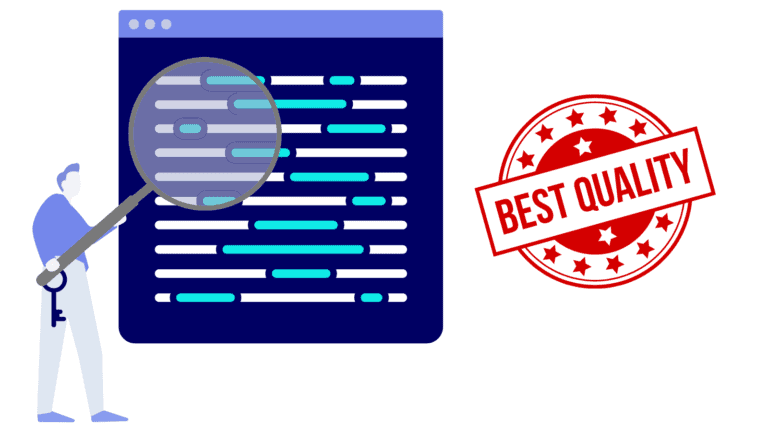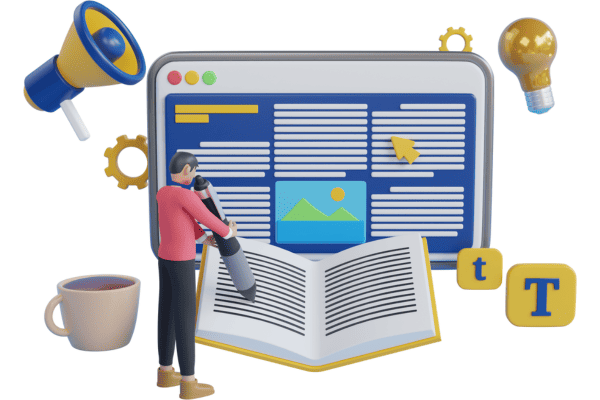5 Most Effective On-Page SEO Strategies for (2023)
In 2023, on-page SEO has become one of the best ways to improve your website’s rankings on Google. But you might be wondering, what exactly should you focus on?
In this video, Julian Goldie SEO shares the 5 most effective on-page SEO Strategies for (2023) that will help you rapidly increase your rankings and drive more organic traffic. He covers search intent, content quality, meta tags, site speed, and URL optimization.
These simple tweaks and strategies can significantly impact your website’s visibility and your online success. So whether you’re a seasoned SEO professional or just starting, this video is a must-watch for anyone who wants to rank higher on Google and attract more organic traffic.
1. Focus on Search Intent
Understanding user needs
When improving your website’s visibility and attracting organic traffic, one of the crucial factors to consider is understanding user needs. Search intent refers to the motivation behind a user’s search query.
By understanding the meaning behind a search, you can better tailor your content to meet the needs and expectations of your audience.
To understand user needs, analyze the keywords and phrases driving traffic to your website. Look for patterns and common themes among these searches. Are users looking for information, products, or solutions to a problem?
By identifying these trends, you can deeply understand what your audience is looking for.
Providing relevant and valuable content
Once you clearly understand your user’s needs, providing them with relevant and valuable content is essential. This means creating content that addresses their queries, solves their problems, or provides valuable information.
To provide relevant and valuable content, start by conducting thorough keyword research. Identify the keywords and phrases that align with your audience’s search intent. Then, create high-quality content that directly addresses these keywords.
It is also essential to keep your content up-to-date and fresh. Regularly review your content to ensure that the information is accurate and relevant. If there have been any significant updates or changes in your industry, reflect that in your content.
Remember, the key to success is to consistently provide valuable content that meets the needs of your audience.
2. Prioritize Content Quality
Creating in-depth and relevant content
High-quality content is one of the most critical factors in on-page SEO. Search engines prioritize content that provides value and addresses user needs. To create high-quality content, focus on depth and relevancy.
Instead of creating thin, shallow content, aim for in-depth articles and blog posts covering a topic thoroughly. This will provide more value to your audience and signal to search engines that your content is valuable and comprehensive.
In addition to depth, ensure your content is relevant to your target search queries. Conduct thorough keyword research and incorporate those keywords naturally throughout your content.
However, avoid keyword stuffing at all costs, as this can harm your SEO efforts. Instead, focus on creating content that addresses your audience’s specific needs and questions in a meaningful way.
Making content easy to read and scan
While creating high-quality, in-depth content is essential; it’s equally important to make it easy to read and understand. Most internet users prefer to scan through content rather than read every word, so make sure your content is scannable.
To make your content easy to read, break it into smaller paragraphs and use subheadings to organize your ideas. Utilize bullet points and numbered lists to highlight critical information. You can also use bold or italicized text to highlight important issues or quotes.
In addition to formatting, make sure your content is written clearly and concisely. Avoid using jargon or excessive technical terms that may confuse your audience. Aim to use plain language accessible to a wide range of readers.
Including images and videos
Adding visual elements such as images and videos to your content can enhance its quality and appeal. Visuals help break up the text and make the content more engaging and memorable for your audience.
When selecting images for your content, choose high-quality and relevant visuals that enhance the overall message. Avoid using generic stock photos and opt for unique and eye-catching images that align with your brand.
Similarly, videos can be a powerful addition to your content. They can help explain complex concepts, demonstrate products or services, or entertain your audience. When creating videos, ensure they are optimized for SEO by including descriptive titles, tags, and captions.
By prioritizing content quality and making it easy to read and understand, you can enhance your website’s user experience and improve your on-page SEO.
3. Optimize Meta Tags
Improving title tag and meta description
Meta tags, including title tags and meta descriptions, are crucial in attracting organic traffic to your website. These tags summarize your content in search engine results and can significantly impact click-through rates.
To improve your title tag, ensure it accurately reflects the page’s content and includes relevant keywords. Keep it concise, ideally between 50-60 characters, to ensure it’s evident in search engine results.
Meta descriptions, on the other hand, should provide a concise summary of what users can expect from your content. It should compel users to click through to your website by highlighting the key benefits or information they will gain. Include relevant keywords naturally, but avoid keyword stuffing.
Increasing click-through rates
Optimizing your meta tags can significantly increase your click-through rates (CTRs). You can entice users to click on your search result by crafting compelling and relevant titles and descriptions.
To further increase your CTRs, consider adding structured data markup. Structured data provides additional information about your content, such as ratings, product information, or event details, directly in search engine results. This can help your content stand out and attract users’ attention.
Making content attention-grabbing and relevant
In addition to optimizing meta tags, making your content attention-grabbing and relevant can improve your on-page SEO.
Craft compelling headlines that grab users’ attention and convey the main topic of your content. Use powerful words or emotional triggers to evoke curiosity or create a sense of urgency. However, ensure that the headline accurately reflects the content to avoid misleading users.
Within your content, include relevant keywords naturally and strategically. Don’t force keywords into your content; instead, focus on creating high-quality, informative, engaging content that naturally incorporates relevant keywords.
By optimizing your meta tags and making your content attention-grabbing and relevant, you can improve your website’s visibility and attract more organic traffic.
4. Focus on Site Speed
Importance of fast-loading websites
Website speed plays a crucial role in user experience and on-page SEO. Research has shown that users tend to abandon websites that take too long to load, leading to high bounce rates.
Additionally, search engines consider website speed a ranking factor, prioritizing faster-loading websites in search results.
Aim to optimize your website’s speed to provide a seamless user experience and improve your SEO efforts.
Optimizing site speed with tools like Google’s PageSpeed Insights
Google’s PageSpeed Insights is a free tool that provides insights into your website’s performance and suggestions for improvement. It analyzes your website and provides recommendations on areas that can be optimized to improve site speed.
Use tools like PageSpeed Insights to identify areas of improvement, such as minimizing render-blocking resources, leveraging browser caching, or optimizing server response time.
Following the recommended optimizations can significantly enhance your website’s speed and overall performance.
Compressing images and minifying code
One common factor that slows website speed is large file sizes, especially with images and code. Compressing photos without sacrificing quality can significantly reduce file size and improve loading times.
Use image compression tools or plugins to optimize images on your website automatically.
Similarly, minifying code involves removing unnecessary characters and spaces from your HTML, CSS, and JavaScript files. Minifying your code reduces file sizes and helps the browser load your website faster.
Choosing the right website host server
Another crucial aspect of optimizing site speed is selecting the website host server. Different hosting providers offer varying levels of performance and reliability.
Choose a hosting provider with fast server response times, adequate bandwidth, and reliable infrastructure to ensure optimal site speed.
By focusing on site speed and optimizing various aspects of your website, you can provide a seamless user experience and improve your on-page SEO.
5. Optimize Your URLs
Creating relevant and keyword-rich URLs
URLs play an important role in on-page SEO. Including relevant keywords in your URLs can provide additional context to search engines and help improve your website’s visibility in search results.
When creating URLs, aim to include your target keyword or a short, descriptive phrase that accurately represents the page’s content. Avoid using generic or irrelevant URLs that do not provide any meaningful information.
Making URLs short and descriptive
In addition to including relevant keywords, it’s essential to make your URLs short and descriptive. Short URLs are more accessible for users to read and share, and search engines favor concise URLs.
Instead of using long URLs with unnecessary elements or parameters, create clean and descriptive URLs that accurately reflect the page’s content. This improves user experience and makes it easier for search engines to understand your website’s structure.
Improving visibility in search results
Optimizing your URLs can improve your visibility in search results. By including relevant keywords and making your URLs descriptive, search engines can better understand the content of your pages.
This, in turn, can lead to higher rankings and increased organic traffic.
Additionally, user-friendly and descriptive URLs can entice users to click on your search result, improving your click-through rates and overall user engagement.
By optimizing your URLs and making them relevant, short, and descriptive, you can improve your website’s on-page SEO and attract more organic traffic.
Conclusion
Implementing these on-page SEO techniques can significantly improve your website’s visibility, user experience, and organic traffic.
By focusing on user needs, creating high-quality content, optimizing meta tags, prioritizing site speed, and optimizing your URLs, you can enhance your on-page SEO efforts and drive more organic traffic.
Remember, continuously monitoring and refining your on-page SEO strategies are essential to keep up with the ever-evolving digital landscape. Stay updated with the latest SEO trends and adjust your techniques accordingly.
With dedicated effort and implementing these hacks, you are well on your way to achieving on-page SEO success.
We’re reader-supported. We may earn an affiliate commission when you buy through links on our site.

Angus Robertson is an authority in online marketing, affiliate marketing, and Search Engine Optimization (SEO). With an innate passion for the digital world, he has spent the last two decades assisting businesses in amplifying their online presence and boosting profitability.






